Staple’s recreations of 14th century woodworking tools
Staple loves woodworking and has built several replica tools to help do it in as period a manner as possible.
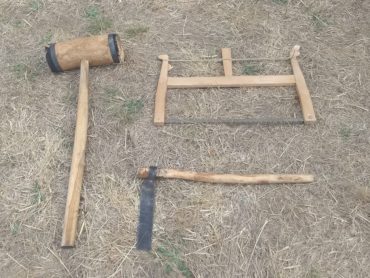
Staple loves woodworking and has built several replica tools to help do it in as period a manner as possible.
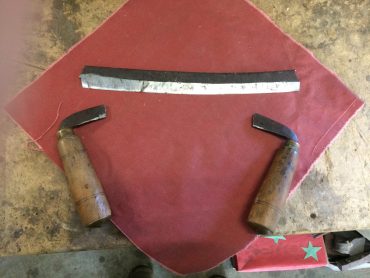
Our story begins with two tools. Not, as one might expect, two chaps of less than impressive wit (Rosencrantz and Guildenstern spring to mind), but rather two actual tools. As in, metal ones. Our first contender is the humble froe (left). Plain and simple, but of stout constitution, the froe is designed for riving (that is, splitting) boards or shingles from logs. It is made to be struck, embedding it within the end grain of a piece of timber, before being used to lever the new board away from the parent log. By contrast, the drawknife (right) is keen and nimble, made for shaving timber pieces to shape and size.
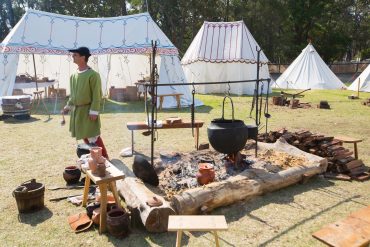
Once again Company of the Staple were the hosts of the 14th century village and provided the skills and know-how for creating the delicious food which the 14th century ate all weekend, freeing people up to talk about their passions in the 14th century to our public.
Featured image is by Gareth Carr @gcimagery. 14th century cooking set up at St Ives Medieval Fair 2018
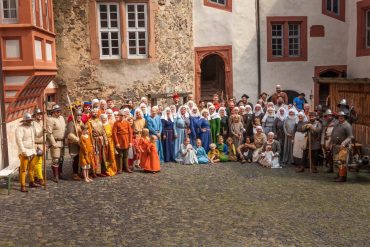
Whether you’re having your medieval clothes made, or buying fabric to make them yourself, the first question new re-enactors ask is “What colour should my clothes be?” The correct, but unhelpful, answer is “It depends”. It depends on the precise period of history, the place, the socio-economic status, the profession etc of the person you’re portraying.
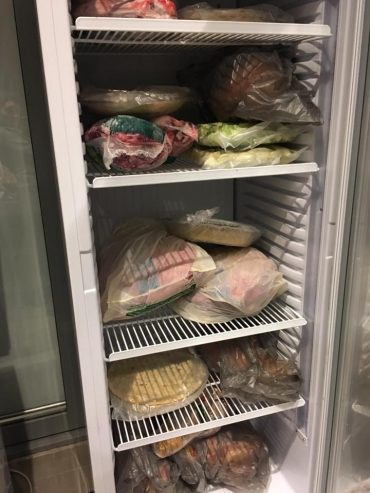
Reducing waste at feasts helps in two aspects of cooking management.
1) reducing food wastage means a reduction in expenses, meaning that the feast can be cheaper (or remain in budget) as not as much food is purchased
2) reduces how much food needs to be thrown away.
So there’s a few things involved in reducing the food waste at a feast.
It comes down to preparation and planning (as so much of cooking does).
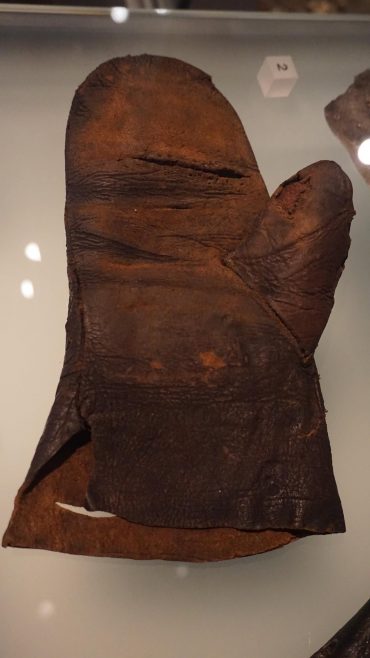
If you do a lot of cooking over a fire like Staple does, you need a way to get things off and on the fire without hurting yourself.
One way is to just use an apron or tea towel folded over itself a couple of times to pick up the item. This barrier is enough to move items a short distance, if done right and carefully.
We decided that we also wanted to make a fireglove.
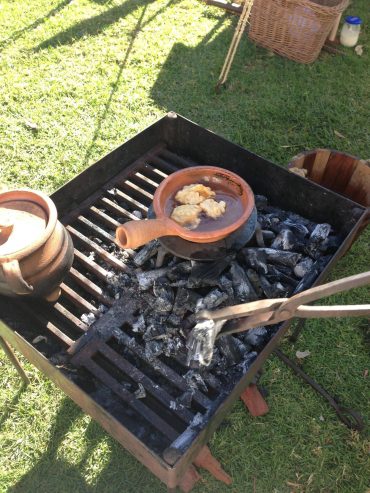
On August 5th, Company of the Staple member Roxy talked about Campfire cooking and cooking with ceramics on a campfire. These are the notes from that talk.
The above image is of a saucepan with oil, for deep frying cheese fritters. It is in a trivet, and being cooked with charcoal.
A copy of the recording from the chat can be found here
Read More…
Company of the Staple is a living history group in Sydney, Australia for living history portrayals of life in Calais, 1376